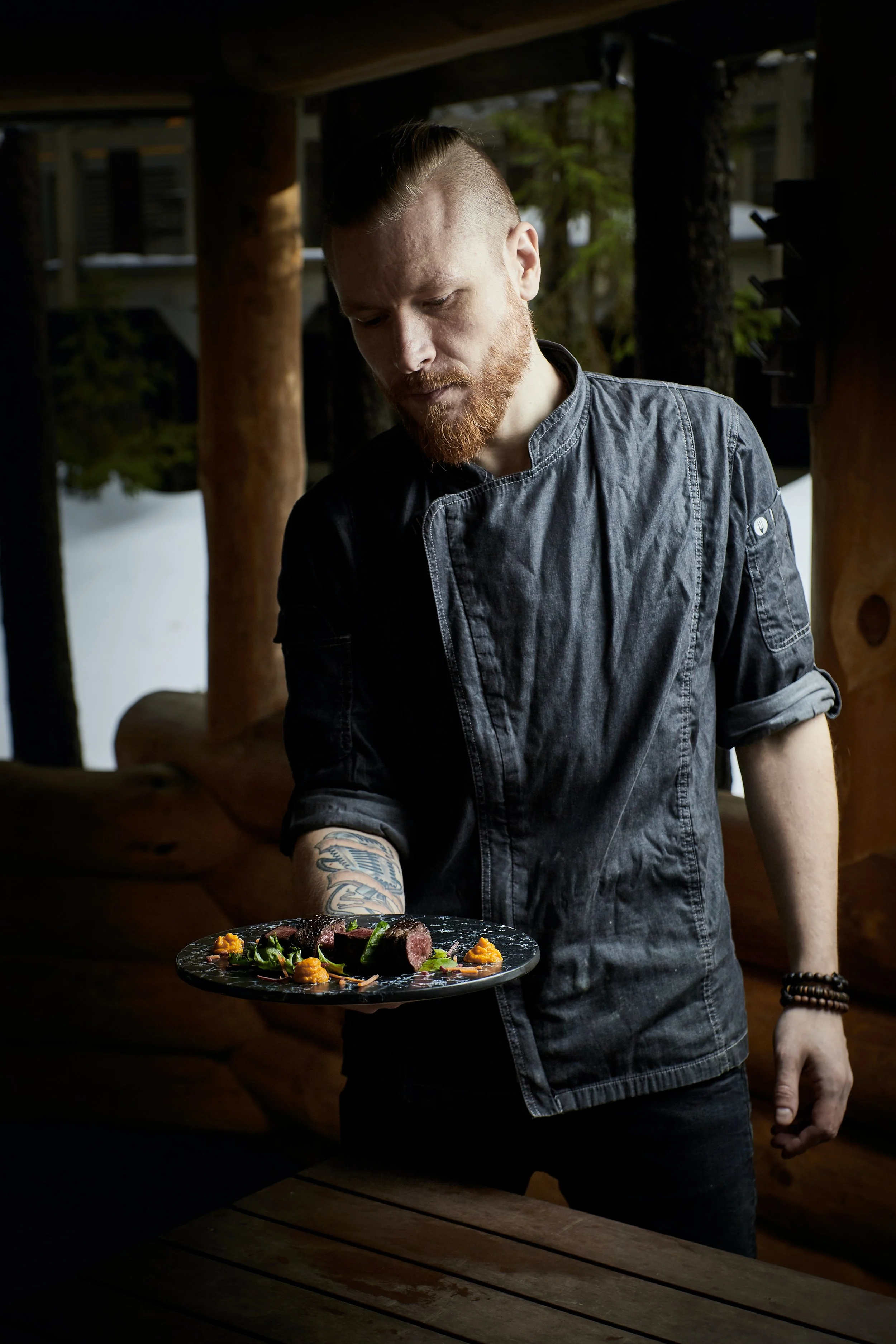A Dream for a Happier Kitchen
You wouldn’t expect a coder to be waiting tables, but that’s exactly what I was doing one summer after my Freshman year at Tufts. I was making the transition from a liberal arts education to Computer Science, and I spent my summer working in a kitchen. Little did I realize that this experience would be a glimpse into the industry I would soon be trying to improve.
During my time as a waiter, I got a first look at how restaurants function — or perhaps more accurately, how they struggle. As I dove deeper into my Tufts technology classes, I realized that the analog nature of a commercial kitchen felt decades behind the rest of the world.
Given how technology is woven into the fabric of just about every other industry on the planet, I always wondered why there was so little crossover and so few tech options available to alleviate the stress put on restaurant staff.
What’s funny is that even now, more than a decade after that summer spent working in a kitchen, I still find myself asking the same question.
Bringing Restaurants into the 21st Century
It was during my final year earning my CS degree at Tufts that I was courted by a startup (now a very successful company) called Box. Box was a pioneer: they built enterprise software that didn’t feel like enterprise software. Their software, while intended for use by large organizations, felt as clean and user-friendly as most consumer software.
As I worked my way up to a Senior Software Engineer position within Box, I learned everything about what it took to build robust enterprise-grade software. I witnessed firsthand the negative effects of rushing a product to market. I developed a concern for tech debt, and a desire to build software focused on quality before anything else.
Right around the time I was burning out at Box, I was recruited by Sprig — another ambitious startup based out of San Francisco. Sprig was essentially a proto-DoorDash or Uber Eats. The big difference was instead of delivering food from other restaurants, we’d have a rotating menu of healthy, nutrient-dense meals prepared in-house by top-level chefs — all with the promise of arrival at your door in under 15 minutes.
Sprig took the (already significant) complexity of a traditional food service organization and dialed it up to eleven. The R&D team was constantly coming up with new dishes which would be rolled out every two weeks. We had a daily rotating menu, five meals a day, with limitless demand. This meant that the kitchen was required to do something completely different each day. This is the stuff of nightmares for a seasoned executive chef who understands the complexity of a kitchen. At Spring, this chef was Nate Keller.
As the culinary co-founder of Sprig, it was Nate that bore the weight of the operation’s extreme overcomplexity. Somehow, he was able to make the thing work through sheer brute force. As the company scaled up, however, Nate’s job grew more difficult. He would regularly appeal to the company’s tech founders, pleading for additional, purposeful technology that would make Sprig’s wildly aspirational kitchen function properly. I paid close attention to the systemic problems Nate was identifying at the time. It was his voice that made me start thinking about the extraordinary levels of complexity that occur when technology is introduced into food service.
As Nate fought the good fight with his co-founders, I made a tangential discovery of my own. As someone with a restrictive diet due to my Crohn’s disease, gluten was a no-go. During my time at Sprig, I noticed that many of the dishes on Sprig’s customer app were improperly labeled. Some gluten-free recipes weren’t tagged properly and vice-versa.
I made inquiries with the team in charge of the app and was told that all recipes were input manually. Our recipes weren’t tracked in anything more nuanced than a spreadsheet, text file, or in an alarming number of physical binders. The team was happy to correct the issue for the individual recipe I’d flagged, but they couldn’t guarantee this wouldn’t happen again. This was not a permanent solution.
All of these dominos got me into the kitchen with Nate. I wanted to put my technical skills to good use to help Sprig solve its scaling problem.
I pulled at threads and inquired with different departments, and discovered that the kitchen processes were painfully antiquated, and no effort had been made to modernize or automate any of the many tricky, error-prone processes such as recipe archival.
As a result of my discovery, I started with a recipe archive feature and deployed it. From there, I took the passion project one step further by developing an inventory-tracking software, which inspired resource calculators to determine the amount of time and ingredients that would be required to facilitate recipes. I knew we were on to something when one of our many seasoned chefs marveled at my software, saying “I wish I had this for every job I’ve ever had.”
Just as all the improvements, suggestions from colleagues, and additions had culminated into one hell of a restaurant support tool, Sprig closed its doors for good.
Food Waste and Staff Turnover — The Real Enemy
My time with Sprig had me interacting with the top minds in the field of culinary logistics — pastry chefs at Hilton Hotels and executive chefs responsible for overseeing the entire food production process for Emirates Airlines.
All of them confirmed that even the highest-level kitchens ran on pen, paper, and rickety Excel spreadsheets. Unlike Sprig, these kitchens used static, non-rotating menus. They’d been churning out the same recipes for decades, and the people at the top of these companies saw no reason to consider innovation.
The deeper I dug, the more I found myself putting on hairnets and hopping into the cramped, humid backrooms of many different kitchens to see what pitfalls could be paved over with software.
What I witnessed included longtime employees performing tasks from memory, a boatload of terrified entry-level staff scrambling to solve difficult math equations they didn’t think they’d have to deal with, and a generally unrealistic level of knowledge everyone from the lowest-paid hire to executive chef was expected to possess.
Restaurants live and die by their overhead, making time and ingredients their two most precious resources. I lost count of how many employees I’ve seen under the gun or let go because they were expected to understand processes that no one explained to them.
Take calculating how many vegetables you need to start with to arrive at X number of diced vegetables, or adjusting next week’s order quantities based on what ingredients you have left over from the previous week — those are moving targets that even longtime restaurateurs have a hard time nailing down.
Going the Distance with Galley
One of the first people I brought the concept of Galley Solutions to was my co-founder, Ian Christopher. I met Ian at Scott River Lodge, a boutique couple’s retreat center where he served as Executive Director. It was there that I observed Ian’s handiwork: he had single-handedly turned the retreat from something close to shambles into a five-star experience. Incidentally, Scott River’s parent organization, a large summer camp, would go on to become Galley Solution’s first paying customer.
I knew that Ian had firsthand experience with the food service dysfunction that Galley would soon solve — not only did he work in hospitality, but his mom had been a caterer throughout his childhood. When I told Ian about Galley, his enthusiasm resonated with my own so deeply that we decided to combine forces, and we moved both of our families under one roof in San Diego. From there, we continued to assemble our rockstar team around the dream of Galley and the mission of improving kitchen operations for everyone.
Galley is cultivating an environment of active stewardship, insatiable curiosity, and empowerment through respect and growth. We’re not just determined to simplify kitchen logistics across the globe, we’re looking to improve lives. This vision has helped Galley accrue a team of like-minded experts fully committed to setting a new benchmark of camaraderie in the kitchen.
We’re offering a salve to a decades-old problem, one that promises to shape the way the kitchens of the future operate. Our passion has drawn the talents of colleagues such as Sprig’s own Nate Keller (former Google Executive Chef) and Jonathan Press (Tesla’s #1 Global Energy Advisor), both of whom are hungry to revolutionize the food and beverage space by perfecting our SaaS.
We’ve got the team and the vision, and we’re dead set on our all-important directive of keeping things fun… after all, isn’t that why we fell in love with the culinary arts in the first place?





